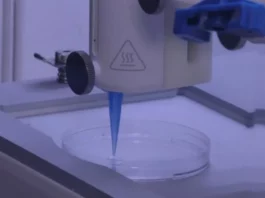There are many ways to monitor the cardiac rhythm for abnormalities. Most of these ways are designed to measure the rhythm for a short period of time, usually out-patient. However, abnormalities such as arrhythmias are intermittent and may not be seen during such a short duration.
In this case, doctors recommend a cardiac Holter test. Here, a device is attached to the chest with wired electrodes. It constantly takes up data from the electrodes which the doctor can analyze once the test is over.
While a regular Holter test is useful to check up on cardiac rhythms for a long time, it is not useful as an immediate diagnostic test. This is why a company called Biotricity has designed a system called Bioflux which uses a “mobile cardiac telemetry (MCT) device”.
How does the monitor work?
The MCT device is attached to the patient’s chest via electrodes just like a regular Holter monitor. It is worn under the clothes and the patient has the freedom to go about their daily activities. What’s different is that the Bioflux device can also analyze the data it collects for anomalies, which, upon detection, it transmits to a call center for review by a physician’s staff in real-time via a cellular modem. The staff can then remotely analyze the data and escalate it to the physician if they deem it necessary, who can schedule an appointment with the patient or intervene immediately. The device also features a button that the patients can press if they feel any abnormal symptoms.
This detection and transmission feature is useful both for patients undergoing the Holter test and their doctor. It enables doctors to gather data for up to 30 days which helps elucidate cardiac patterns. It can also alert the doctor in case of emergencies for immediate intervention.
While useful, patients have reported some discomfort in wearing the Bioflux MCT device. To remedy this, the company is working on introducing a version of the device that focuses on the comfort of wear during a longer monitoring period. This device, called the Biotres, will be a more conventional type of Holter monitor as it will not transmit data in real-time.
It will be used for patients who are not expected to have a sudden cardiac event, i.e. who are low-risk.
Source: Medgadget
https://www.medgadget.com/2021/07/remote-monitoring-for-cardiac-patients-interview-with-dr-waqaas-al-siddiq-ceo-of-biotricity.html



